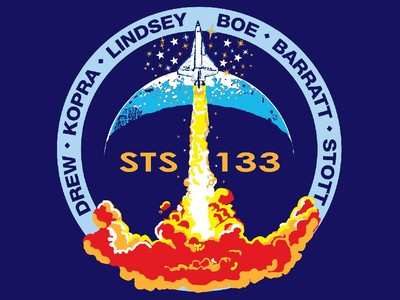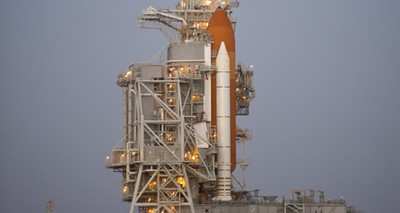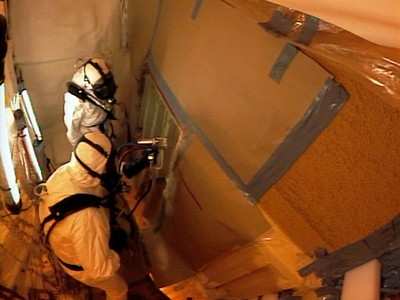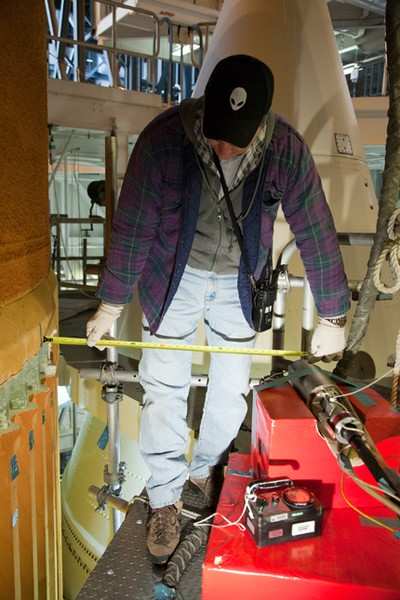Fri, Jan 07, 2011
Early February Launch Opportunity Delayed as Work Continues on
External Tank
The Space Shuttle Program held its weekly Program Requirements
Control Board (PRCB) meeting today to review progress on the
continuing engineering investigation, testing and analysis
regarding shuttle Discovery's external fuel tank stringer crack
issue.

With the work remaining, the potential for additional
modifications yet to be defined, and further reviews pending, the
decision was made today to allow the teams additional time and
delay the next launch opportunity out of the early February launch
window, which opened Feb. 3. New potential launch dates for
Discovery’s STS-133 mission and shuttle Endeavour’s
STS-134 mission will be discussed at next Thursday’s PRCB
meeting.

Progress continues to be made in understanding the most probable
cause of cracks discovered on Discovery’s external tank
mid-section, known as the intertank, where small cracks developed
during the Nov. 5, 2010, launch attempt. Four additional small
cracks were found during thorough X-ray image scans of the backside
of the tank after Discovery was returned from the launch pad to the
Vehicle Assembly Building at NASA’s Kennedy Space Center in
Florida on Dec. 22.

Plans are for the repair work to continue through the weekend.
The shuttle program also reviewed the plan to modify as many as 32
additional stringers with radius blocks, which will provide added
structural support in areas known to carry much of the structural
load of the external tank. These radius blocks essentially fit over
existing stringer edges through which the securing rivets are
installed to provide additional structural support. The radius
block modification is a known and practiced structural augmentation
technique used extensively on the intertank. This work should begin
as soon as the repairs to the three stringers with the four
additional small cracks have been completed, likely in the next day
or so, and the modification of the additional 32 stringers is
expected to be complete next week.

Senior NASA managers and Space Shuttle Program managers will
meet Monday to review the progress to date and the forward plan. A
determination of the need and viability for the installation of
additional radius blocks on all remaining stringers will be made
sometime next week.
More News
Terminal Radar Service Area Airspace surrounding designated airports wherein ATC provides radar vectoring, sequencing, and separation on a full-time basis for all IFR and participa>[...]
Very High Frequency (VHF) The frequency band between 30 and 300 MHz. Portions of this band, 108 to 118 MHz, are used for certain NAVAIDs; 118 to 136 MHz are used for civil air/grou>[...]
“From approximately November 2021 through January 2022, Britton-Harr, acting on behalf of AeroVanti, entered into lease-purchase agreements for five Piaggio-manufactured airc>[...]
Also: Virtual FLRAA Prototype, IFR-Capable Autonomous A/C, NS-32 Crew, Golden Dome Missile Defense Bombardier announced that the first production Global 8000 successfully completed>[...]
Aero Linx: The 1-26 Association (Schweizer) The Association’s goal is to foster the helpfulness, the camaraderie, and the opportunity for head-to-head competition that is fou>[...]
 ANN's Daily Aero-Term (05.29.25): Terminal Radar Service Area
ANN's Daily Aero-Term (05.29.25): Terminal Radar Service Area ANN's Daily Aero-Term (05.30.25): Very High Frequency (VHF)
ANN's Daily Aero-Term (05.30.25): Very High Frequency (VHF) Aero-News: Quote of the Day (05.30.25)
Aero-News: Quote of the Day (05.30.25) Airborne 05.23.25: Global 8000, Qatar B747 Accepted, Aviation Merit Badge
Airborne 05.23.25: Global 8000, Qatar B747 Accepted, Aviation Merit Badge ANN's Daily Aero-Linx (05.30.25)
ANN's Daily Aero-Linx (05.30.25)






